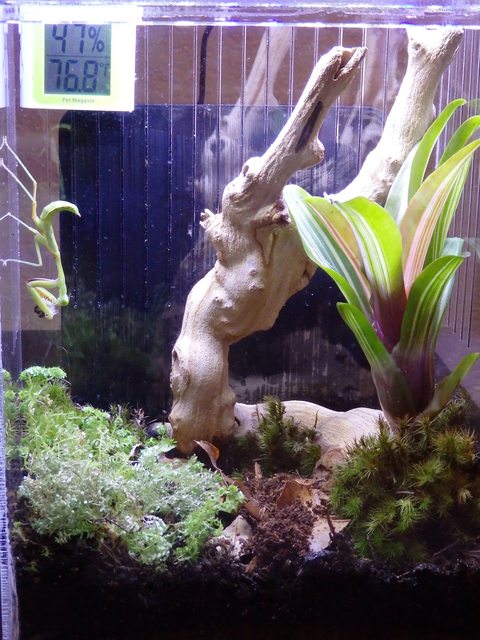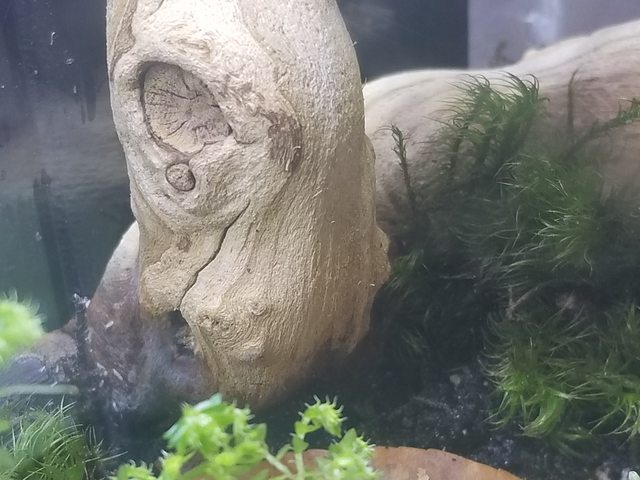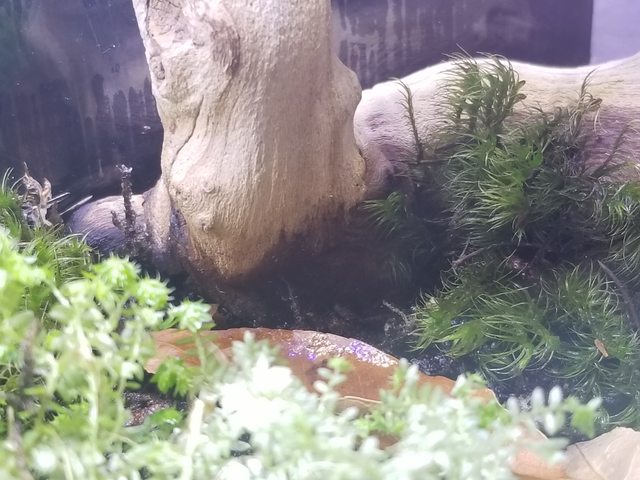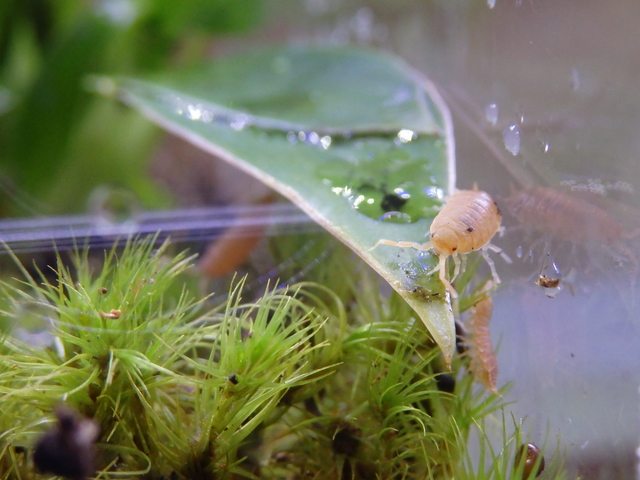Haha thanks. Prepare for my long-winded answer.

Regarding your substrate. It looks like you have done a good job to learn about the drainage layer and substrate. It is difficult to manage in small enclosures since the depth is precious, but you would be better off with 3x or 4x as much drainage as it appears you currently have. I know how much of a pain it is to tear it up, so maybe just add more if you run into problems or are replanting plants already. Then you can make sure there is always a little bit of water at the bottom without it soaking into the soil. About the plants, I am terrible at orchids but understand they have more specific watering needs. I would not be surprised if you fail at keeping the orchid in there. We have defaulted now to only moss, bromeliads, and easy plants like philodendrons. Bromeliads, you just fill up the cup in the middle of the plant so it doesn't impact soil moisture or humidity much. Philodendrons thrive in a variety of conditions. I don't see any discussion of lighting in your post, but be careful with only sunlight from a window. It can cause temperature spikes and humidity spikes if you aren't careful. I use small LED aquarium lights on a timer to keep the plants growing well away from the window. They are about $15, timers are another $5.

Regarding sprintails:
Springtails will not overpopulate, will not likely escape, and are not harmful to your mantis. They will occasionally have population booms that may concern you, but it just means they are doing their job. They eat mold and detritus, so they are almost entirely beneficial. I add them to any substrate without hesitation. They live with my cockroaches, my isopods, and my mantises. Regarding your "picking them out" comment, once they are added they are there for good and baking, freezing, or starting fresh is about the only way to get rid of them. They look like mites somewhat so some people find them creepy, but in my experience they only benefit the setup. Here is an example from my own vivarium. A lot of mold started to form on my grapewood (bottom left). After another day or two the springtail population grew and found the mold, and ate it all up. Especially if anyone in your family has a mold allergy, these guys are your friends.


Regarding isopods:
Isopods can be helpful to the vivarium in many of the same ways as the springtails, but they have more challenges as well. Some isopods eat more protein and may go after a mantis who fell during molting. I haven't seen this myself, or any direct proof, but have heard about it. The mantis will eat isopods if it sees them and they are the right size. Every time I have added isopods to my mantis enclosure, the mantis eats them all up except one or two that hide well enough. This can be concerning financially since isopods can range from $0.50-10 each depending on species. They are a fine food source and will serve as supplemental food between feedings, but you should keep a colony of the isopods outside of the vivarium so you can replenish when they are eaten without always having to buy more. You will likely need to feed them in the vivarium as well since the mantis won't create quite enough waste for them. A good substrate goes a long ways towards their feeding needs.
The exception to about everything I said above is the dwarf white and dwarf purple isopods. They are quite small and hide in the substrate, so they are rarely eaten. Their size also makes them less fun, so your daughter isn't likely to get attached to them (whether that is a pro or con). They are also the cheapest and most available.
With all that said, here is what I would do. Buy a springtail culture. They are cheap and make managing mold and moisture so much easier. You will want to only add maybe 25% of the springtails to the vivarium and keep the rest in their container. They need fed about once a month, but otherwise have almost no care requirements. That way you have more for later if you get more mantises or want to change substrate. If the vivarium is large or you are concerned about waste building up, I would look into isopods. They are by no means needed and should be considered almost a secondary hobby with the mantis. I spend almost as much time enjoying my isopods as I do my mantis. Get dwarf whites if you think your daughter will be unhappy seeing them get eaten. Otherwise, get any variety that is attractive to you and your daughter. Like the springtails, only add about a quarter of what you buy, and keep the rest in their own container so they can continue to breed. They are more work than springtails, but still much easier to care for than mantises. They can provide an additional opportunity for your daughter to learn about the food chain and selective breeding if you get a more ornamental type. Here are our powder orange (which we no longer have since I added them all and a mantis snacked on them). Happy to answer any other questions you have about them or make purchasing recommendations.

 she just received her 1st mantis today. We ordered from PanTerra Pets and are very pleased with the whole transaction. She has named her baby “Groot” He (we think it’s he?) is a very lucky mantis. Any advice for us newbies is appreciated. My daughter is 12 years old, so if we let him die she will be devastated. And I’ve already explained to her lifespan, so I’m thinking we need more mantids so it won’t be so shocking when one dies.
she just received her 1st mantis today. We ordered from PanTerra Pets and are very pleased with the whole transaction. She has named her baby “Groot” He (we think it’s he?) is a very lucky mantis. Any advice for us newbies is appreciated. My daughter is 12 years old, so if we let him die she will be devastated. And I’ve already explained to her lifespan, so I’m thinking we need more mantids so it won’t be so shocking when one dies. 



































































